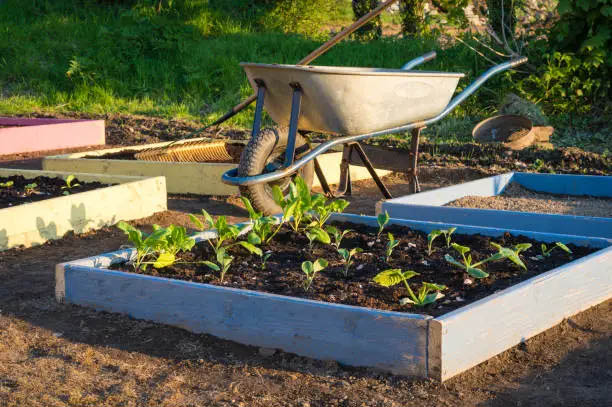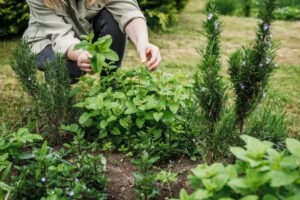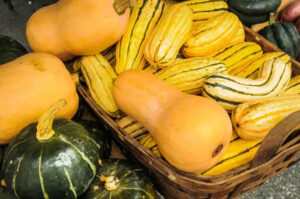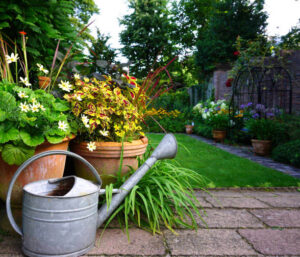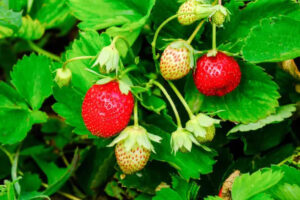Urban homesteading represents a creative, resourceful, and incredibly rewarding endeavor for city dwellers looking to embrace a self-sufficient lifestyle. Despite the challenges posed by limited space, urban environments offer unique opportunities to practice sustainability and self-reliance. This article explores various strategies for maximizing small spaces for urban homesteading, offering practical tips on how to grow your own food, raise animals, and live more sustainably, all from the confines of an urban setting.
1. Vertical Gardening: Going Upward with Your Garden

Vertical gardening is a creative and efficient gardening technique that makes use of upward space, allowing city dwellers and those with limited horizontal areas to cultivate plants. This approach not only enhances the aesthetic appeal of urban environments but also contributes to biodiversity and improved air quality. In this article, we’ll explore the fundamentals of vertical gardening, its benefits, and provide tips on how to create and maintain a successful vertical garden.
Space Efficiency: One of the most significant advantages of vertical gardening is its ability to maximize limited spaces. By growing plants upwards, vertical gardens make efficient use of small patios, balconies, and walls, enabling urban residents to grow a variety of plants in areas that would otherwise go unused.
Environmental Impact: Vertical gardens can help moderate the urban microclimate. They provide insulation to buildings, reducing the need for heating in winter and cooling in summer, thereby decreasing energy consumption. They also contribute to air purification, as plants absorb carbon dioxide and emit oxygen.
Aesthetic Enhancement: Vertical gardens transform bland walls and fences into vibrant live green walls. They can be designed in various patterns and plant combinations, offering not only a lush, attractive feature but also a topic of conversation and a source of pride for property owners.
2. Container Gardening: Flexible and Functional

Container gardening is an adaptable and versatile approach to gardening that is perfect for those who may not have traditional garden spaces. This method involves growing plants in various containers, ranging from pots and raised beds to hanging baskets and large barrels. Container gardening is particularly suitable for urban environments like balconies, patios, or small yards, but it’s also a practical choice for anyone looking to enhance their living space with plants. In this article, we’ll delve into the advantages of container gardening, consider the best practices for setting it up, and share tips on how to ensure your container garden thrives.
Versatility and Mobility: One of the primary benefits of container gardening is the ability to move plants around to optimize their exposure to sunlight or to rearrange them for aesthetic purposes. This mobility is particularly useful in areas with variable weather conditions or limited sunlight.
Control Over Soil and Watering: Containers allow for better control over the soil and watering conditions of your plants. You can customize the soil mix to suit the specific needs of different plants, which is often not possible in traditional garden settings. Additionally, drainage can be managed more effectively in containers, preventing issues like root rot.
Expands Planting Options: With container gardening, you can grow a variety of plants that might not otherwise thrive in your local climate or soil type. Containers also make it possible to cultivate plants that are not native to your area by adjusting the soil type and watering regimen to meet their needs.
Ease of Maintenance: Container gardens are generally easier to manage than large garden plots. They are more accessible, making tasks such as weeding, pruning, and harvesting simpler and less time-consuming. This accessibility makes container gardening a great option for individuals with limited mobility or those new to gardening.
3. Rooftop Gardening: Utilizing Unused Space

Rooftop gardening is a fantastic solution for urban dwellers seeking to transform unused vertical spaces into productive and beautiful green areas. This innovative approach to gardening not only optimizes limited space in densely populated environments but also provides numerous environmental and social benefits. In this detailed exploration, we’ll discuss how to establish a rooftop garden, the benefits it brings, and tips for cultivating a thriving garden above the ground.
Environmental Impact: Rooftop gardens can significantly reduce the urban heat island effect, a common problem in cities where buildings and concrete absorb and radiate heat. Vegetation helps cool the air, reducing the need for air conditioning in the surrounding buildings and decreasing energy consumption. Additionally, rooftop gardens can improve air quality by filtering pollutants and carbon dioxide out of the air, contributing to a healthier urban environment.
Storm Water Management: In urban areas, non-porous surfaces lead to runoff problems during heavy rains, which can strain sewer systems and lead to water pollution. Rooftop gardens absorb rainwater, reduce runoff, and help manage storm water more effectively.
Aesthetic and Property Value: A green rooftop adds aesthetic value to a building, making it more appealing to residents and visitors. This can increase property values and attract tenants who are willing to pay a premium for green features and a pleasant environment.
Food Production: Rooftop gardens offer a space for growing food, reducing the need for store-bought produce and allowing urban residents to cultivate fresh vegetables, herbs, and fruits. This not only promotes healthier eating habits but also reduces the carbon footprint associated with transporting food.
4. Composting: Reducing Waste and Enriching Soil

Composting is a cornerstone of sustainable gardening and urban homesteading, providing an excellent way to recycle kitchen scraps, yard waste, and other organic materials into nutrient-rich soil amendments. For city dwellers, adopting efficient composting methods can turn limited spaces into vital parts of a sustainable ecosystem. This detailed exploration covers the benefits of composting, different methods suited for urban environments, and tips for successful compost management.
Soil Health Improvement: Composting enriches the soil, introducing vital organic matter that improves soil structure, aeration, and moisture retention. This enriched soil better supports plant growth by providing a steady supply of nutrients and fostering beneficial microbial activity that helps plants absorb nutrients more efficiently.
Waste Reduction: By composting, urban homesteaders can significantly reduce the amount of waste sent to landfills. Organic waste in landfills decomposes anaerobically, producing methane, a potent greenhouse gas. Composting this material not only prevents methane production but also transforms waste into a valuable resource.
Cost Savings: Using homemade compost can reduce the need for commercial soil amendments and fertilizers. Urban gardeners can save money and avoid the environmental impact associated with producing and transporting these commercial products.
5. Beekeeping

Urban beekeeping has seen a resurgence in popularity due to its relatively low space requirements and its profound impact on local agriculture through pollination. Bees play a critical role in the health of plants by facilitating pollination, which is essential for fruit production. Keeping bees in an urban setting can help pollinate your own garden and those of your neighbors, enhancing the overall productivity and biodiversity of the community.
Getting Started with Bees: To start beekeeping, one must first understand local regulations, as some cities have specific codes regarding beekeeping. Essential equipment will include a hive, protective gear, a smoker, and the bees themselves. Many urban beekeepers choose to keep their hives on rooftops or in small backyards. It’s crucial to ensure that the bees have access to water and a variety of flowering plants. Education through local beekeeping clubs or workshops can provide invaluable information and support.
Challenges and Management: Beekeeping in the city may pose challenges such as managing swarms and ensuring the bees have enough food during the peak season. Planting bee-friendly flowers and perhaps coordinating with local gardens and parks can help provide the necessary resources. Regular hive inspections and maintenance are crucial to prevent disease and keep colonies healthy.
6. Small-Scale Livestock

Raising Chickens: Chickens are one of the most popular forms of small-scale livestock for urban homesteaders due to their size and benefits. They provide fresh eggs, and their waste can be composted into excellent fertilizer. Starting with chickens requires building or purchasing a coop that protects them from predators and provides sufficient space to roam. They need access to clean water and feed, and like bees, they benefit from local regulations that allow for backyard poultry while setting guidelines to manage them responsibly.
Rabbits: Rabbits are another viable option for urban livestock. They require less space than chickens, are quiet, and can provide both meat and a fantastic source of manure that can be directly applied to the garden without composting. Rabbit hutches can be built in a small yard or even a side alley, and their diet of hay, pellets, and vegetable scraps is easy to manage.
Benefits and Considerations: Small-scale livestock can not only provide food and fertilizer but also contribute to pest control, particularly with chickens, which can eat problematic insects. However, they do require daily attention and care to ensure they remain healthy and do not become a nuisance in the neighborhood.
7. Community and Shared Spaces

Importance of Community Gardens: Urban homesteading thrives not just on the individual’s efforts but significantly benefits from communal involvement and shared spaces. This collaboration not only enhances resource efficiency but also fosters a sense of community, providing educational opportunities and support networks that are crucial for sustainable urban living. Here’s how community involvement and shared spaces play pivotal roles in enriching the urban homesteading experience.
Community Gardens as Shared Spaces: Community gardens are vital for urban homesteading, especially in densely populated areas where private green space is limited. These gardens provide plots where individuals can grow their own vegetables, herbs, and flowers. Beyond the production of food, community gardens are hubs of knowledge sharing and support, where novice gardeners can learn from more experienced ones, and where people of all ages and backgrounds can connect.
Benefits to Urban Homesteaders: For urban homesteaders, community gardens offer expanded space to practice gardening beyond their immediate living areas. This is particularly important for those who may not have access to suitable gardening space at home. Furthermore, these gardens can become living laboratories for experimenting with different crops and techniques, which can then be adapted to smaller personal spaces.
Urban homesteading is not only about growing your own food but also about adopting a lifestyle that supports sustainability and self-sufficiency in an urban setting. By creatively using any available space, from balconies to rooftops, and incorporating sustainable practices like composting and rainwater collection, urban dwellers can produce a significant portion of their own food, reduce their environmental footprint, and enjoy the manifold rewards of a closer connection to nature.

